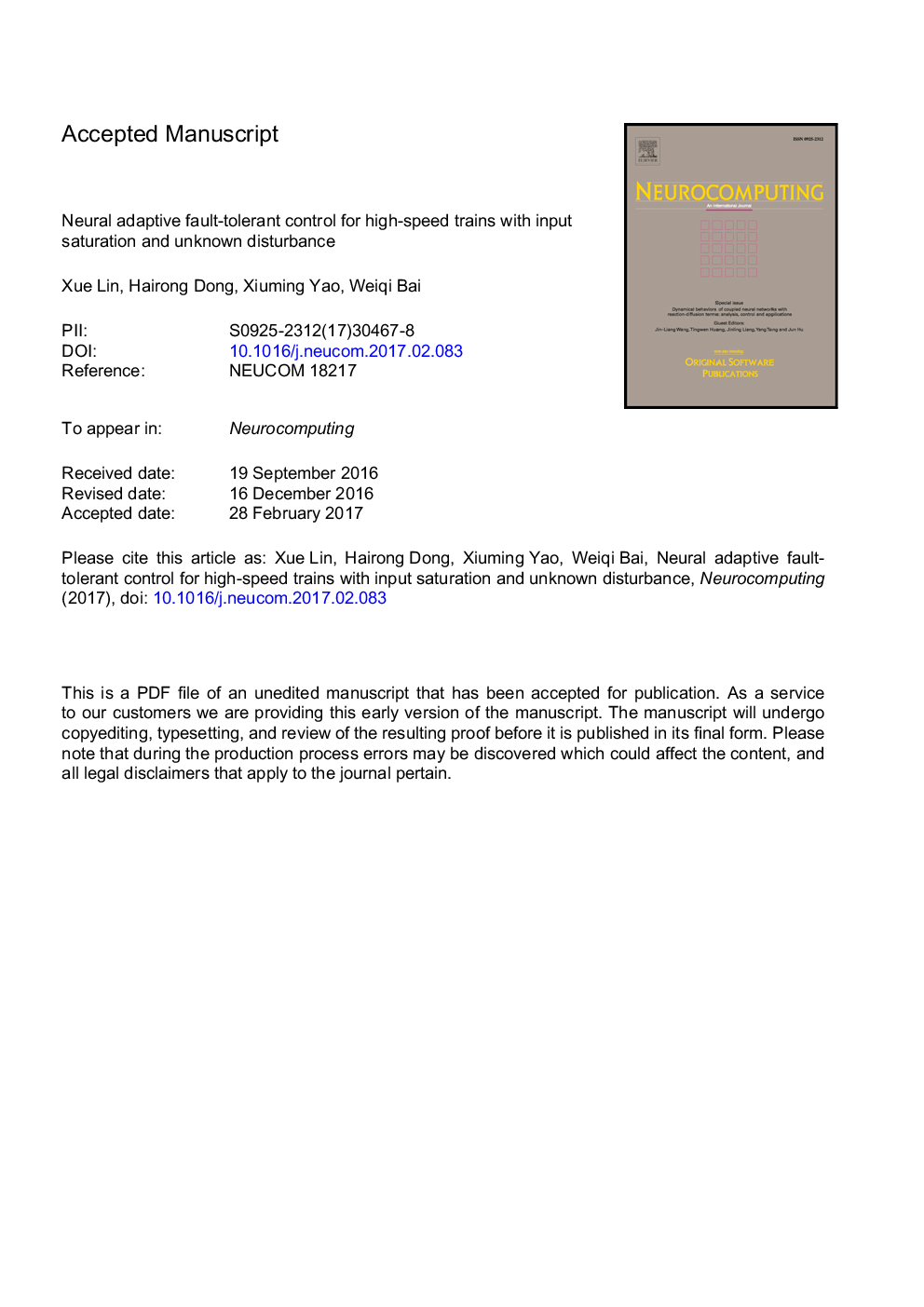| Article ID | Journal | Published Year | Pages | File Type |
|---|---|---|---|---|
| 4947143 | Neurocomputing | 2017 | 34 Pages |
Abstract
The problem of the position and velocity tracking control for high-speed trains (HSTs) subject to unknown basic resistance, extra resistance and actuator faults is investigated. Neural adaptive control strategies based on a novel sliding mode surface technique are presented for three different cases (actuator faults and input saturation are neither considered; only the former is considered, and both are considered) to tackle the problem. For each case, the radial basis function (RBF) neural networks is introduced to approximate the unknown extra resistance consisting of ramp resistance, tunnel resistance, curve resistance, and so on; unknown coefficients of sliding mode surface and dynamics formulation are obtained online via adaptive laws. Simulation results demonstrate the effectiveness of the presented control methodologies.
Related Topics
Physical Sciences and Engineering
Computer Science
Artificial Intelligence
Authors
Xue Lin, Hairong Dong, Xiuming Yao, Weiqi Bai,
